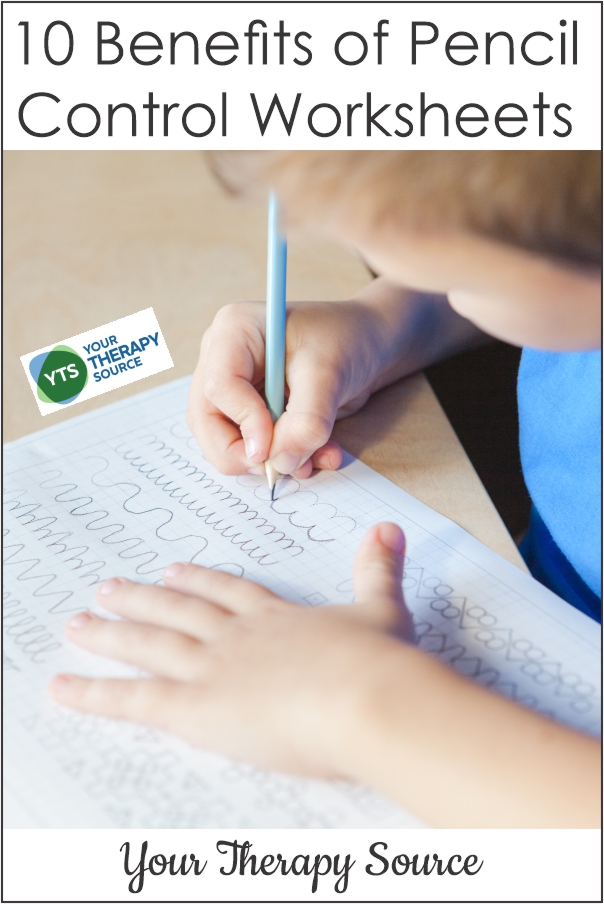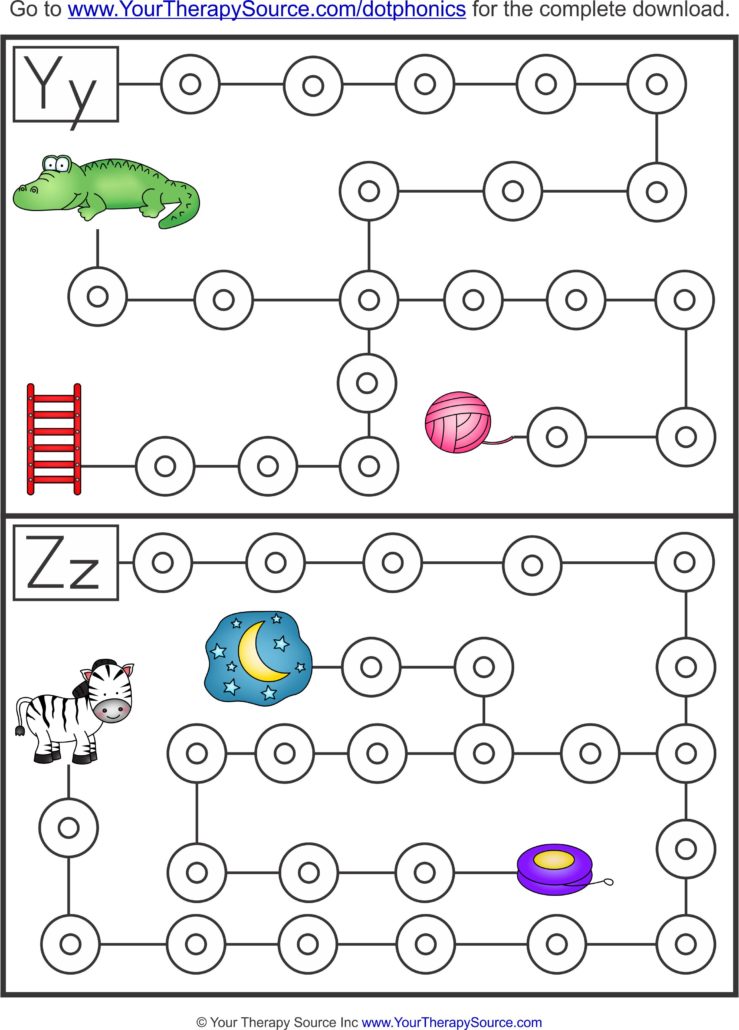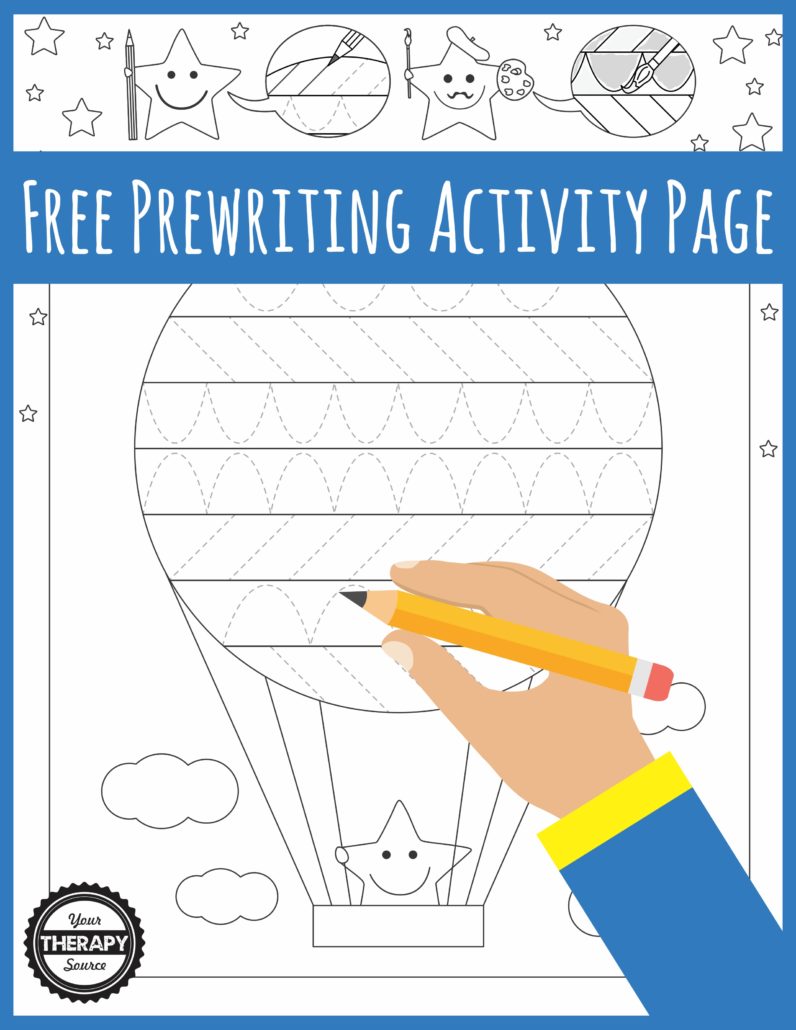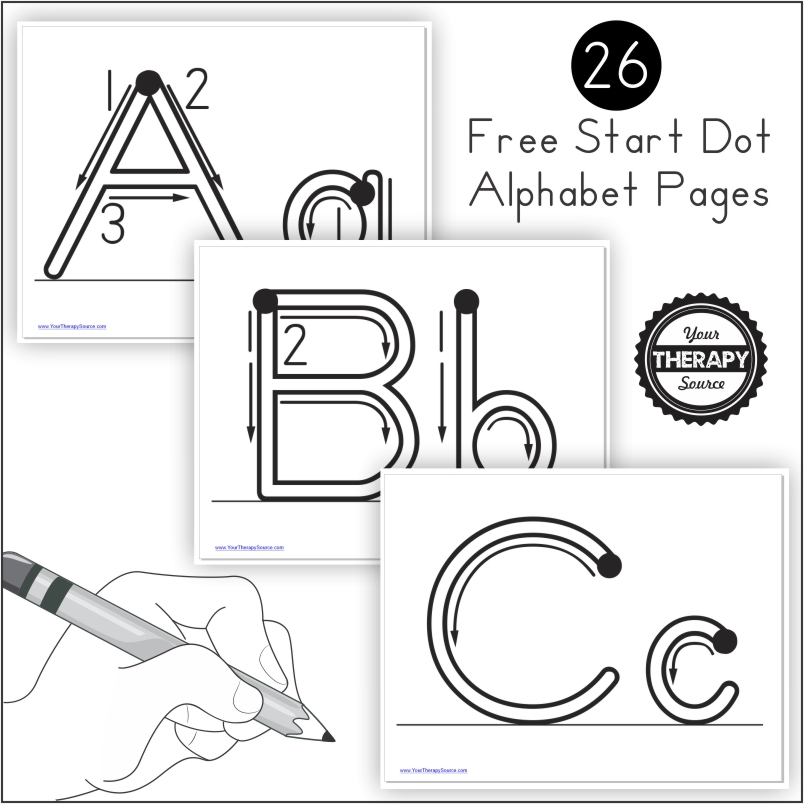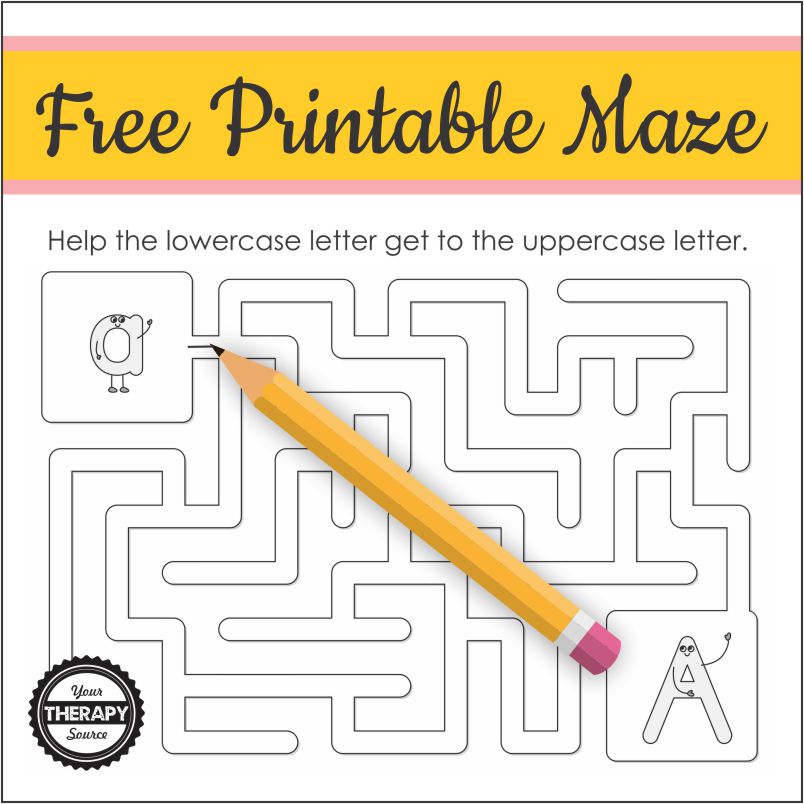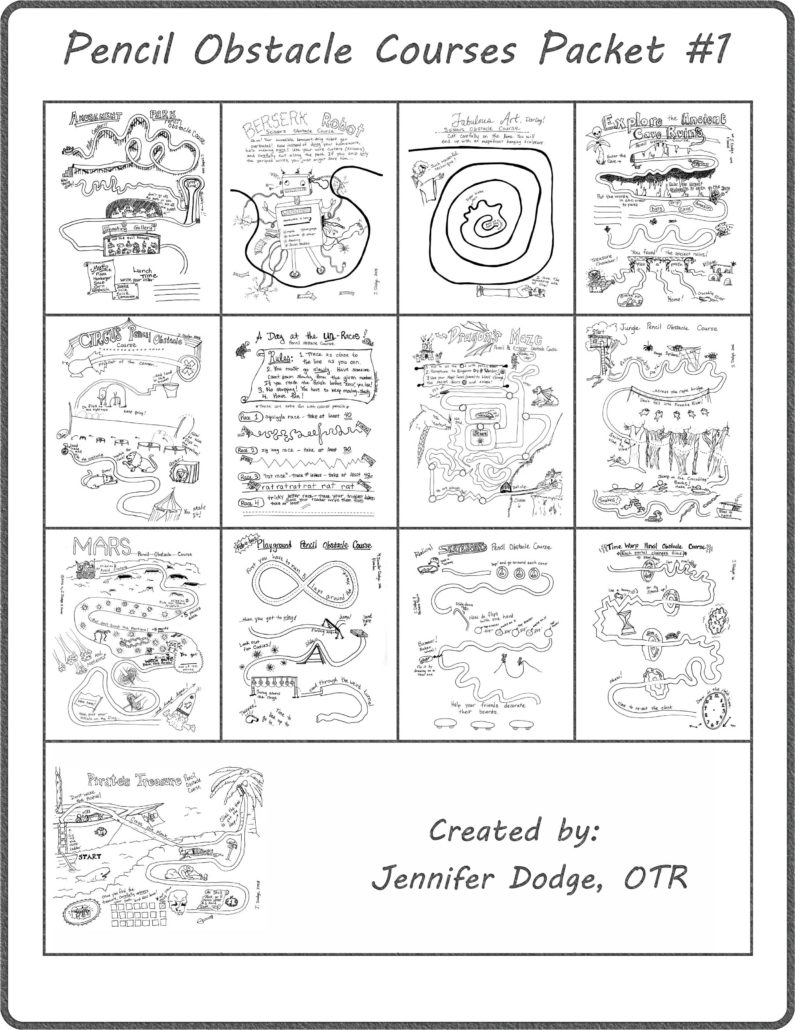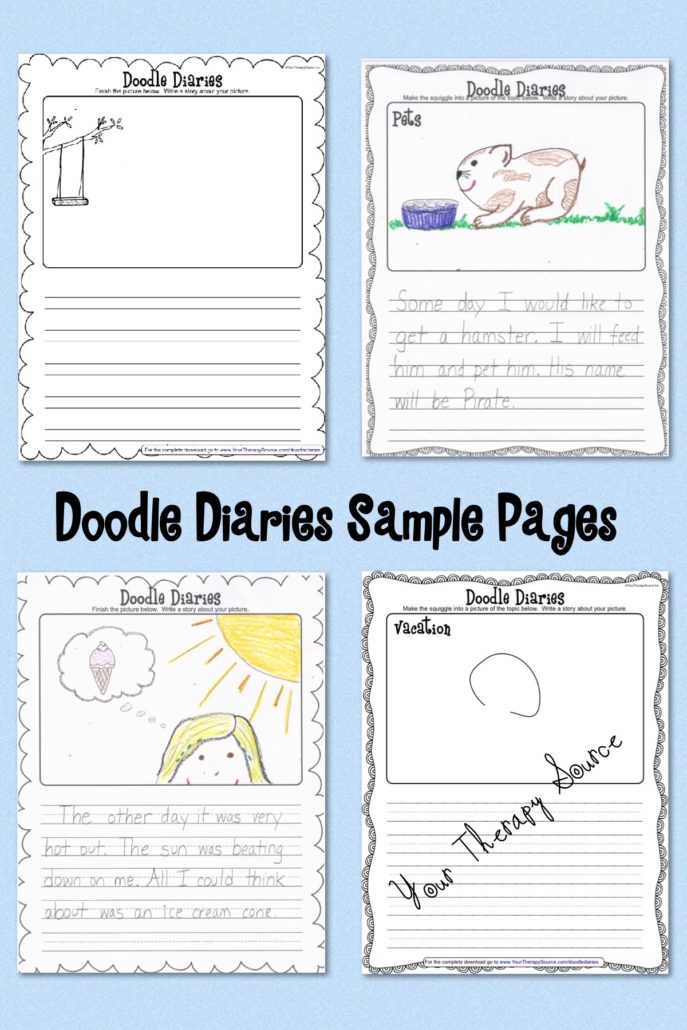Pencil Control Worksheets
Pencil control worksheets are a useful tool for children who may have difficulty with handwriting and fine motor skills. They provide the opportunity to improve pencil control, develop muscle memory, clarify letter formation, and encourage practice. With this in mind, it is no wonder why pencil control worksheets can be so beneficial to students of all ages!
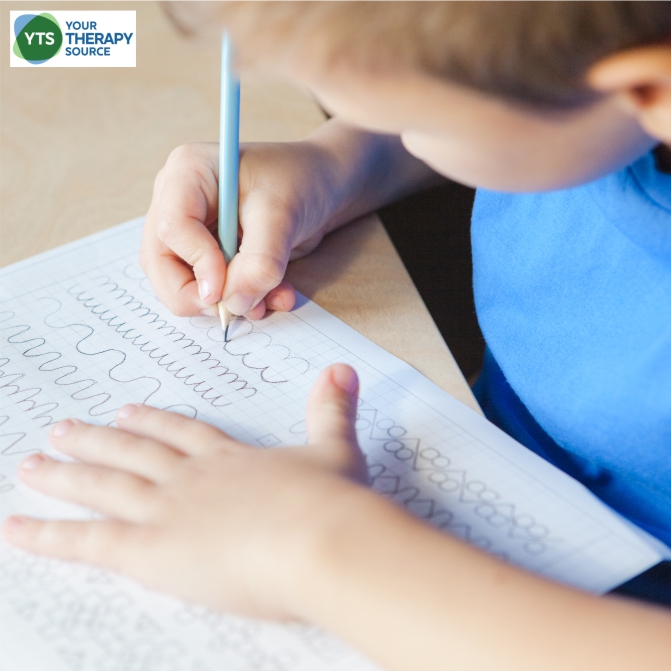
Of course, depending on the goal your students are working on, sometimes other multisensory approaches are necessary (although worksheets can be multisensory too!).
In general, most students benefit from worksheets and other fine motor and strengthening activities to improve handwriting. Use your professional judgment to choose worksheets or other activities based on the child’s skill level. The printables and free resources below can help start your library of pencil control worksheets!
10 Benefits of Pencil Control Worksheets
Benefit #1- Pencil control worksheets provide repeated practice.
Pencil Control Worksheets provide the opportunity for students to reinforce pencil control by practicing various types over and over again until it becomes easier than before.
As this constant repetition strengthens muscles around their hands, fingers, and wrists, writing will possibly become smoother without as much effort or frustration while trying to write legibly.
Want to really work on fine tuning pencil control with repetition? Try this FREE sample page from Dot Phonics A to Z. Can your students color in the circles?
Benefit #2: Benefits of Pencil Control Worksheets – Help Children Prepare for Letter Formation
In preschool, children may not be developmentally ready to write letters, and pencil control exercises can help make sure that kids can learn prewriting strokes and good pencil grip. Then by the time they start kindergarten, there may be fewer gaps when it comes to general handwriting skills and legibility.
Here is an example of a pre-writing pencil control worksheet – Pre-Writing Lines and Strokes on a Hot Air Balloon.
Benefit #3 – Student can practice letter formation.
Pencil Control Worksheets provide the opportunity for students to learn letter formation and spacing by practicing on paper with a pencil. This repetition helps them feel confident about their own handwriting abilities so that they will not have any issues when writing down assignments or taking notes because they know what it feels like to successfully write legibly.
Check out this FREE Alphabet Start Dot handwriting packet.
Benefit #4 - Student can develop muscle memory through repeated practice.
Pencil Control Worksheets provide the opportunity to reinforce pencil control and finger movements by repeatedly practicing them on paper. The repetition helps to strengthens muscles so that penmanship becomes easier with less effort because a motor memory has been formed.
When motor memory takes over, the brain can focus on other aspects of cognitive tasks, possibly making it more likely for a student to complete their assignments without getting frustrated or tired as quickly.
This is important because students will often revert back to earlier learned habits when they are feeling fatigued which may be due in part to weak muscles in the hand and fingers from lack of use during other activities such as recess or having enough time unoccupied at home during non school hours away from screens.
Benefit #5: Pencil Control Worksheets provide children with a sense of confidence.
It is important for kids to feel like they can do something well, especially at a young age. Pencil control worksheets help them build this feeling of competence by providing the skills needed in order to be successful. The more confident a child feels about his or her accomplishments, the higher his or her self-esteem tends to be. Furthermore, their good handwriting will give students another self-esteem boost when thinking about their writing skills.
Pencil control worksheets can be FUN worksheets like mazes or puzzles and not all academically based so there is no pressure on being graded or scored!
Benefit #6: Increase Handwriting Speed with pencil control exercises.
Some kids may have a hard time writing fluently as their letter formation is progressing and they haven’t quite mastered the motor skills needed to move from one letter or word to another smoothly. When students practice using pencil control worksheets, it can help to develop handwriting speed and fluency.
The quality and speed of handwriting increases with years of schooling but practice may also help.
Need to assess handwriting speed? The Handwriting Rubrics packet has a rubric specific for handwriting speed. Also included are rubrics for grades 2-8 that lists age appropriate letters per minute. Find out more information.
Benefit #7: Pencil Control Worksheets Provide Variety
Pencil control exercises can help children develop pencil control skills by reducing boredom and improving motivation. Let’s face it, practicing writing a letter over and over again can get really boring!
When we vary the worksheets, students are getting different types of practice and novelty.
Check out this FREE Circus Pencil Course – your students won’t even realize they are practicing pencil control! It is a sample page from the complete Pencil Obstacle Course Packet #1.
Benefit #8: Helps children to build motor skills and proprioceptive feedback.
Pencil control worksheets can help students develop fine motor skills. There are exercises that will have them work on their pencil control by controlling the amount of pressure they put onto paper or writing legibly without looking at what they’re doing! When students can do that, they are practicing their proprioceptive and body awareness skills to determine where their hand is even when they are not looking. Here are some great fine motor activities to help with pencil control:
Try this FREE Shade Wisely worksheet for pencil pressure practice.
Try this sample page to practice making lines without looking!
Benefit #9: Pencil Control Worksheets Can Work On Coordination
A lot of pencil control exercises will have children’s hands working together to produce a letter or series of letters. For instance, they might be asked to hold the pencils in both hands and draw symmetrical pictures at the same time. This develops coordination between both sides of their body.
This is great for kids who struggle with certain life skills like tying shoelaces because it helps develop upper body strength, coordination, and patience.
Benefit #10: Encourage Creativity and Problem-Solving Skills
Pencil control exercises also promote a sense of creativity and allow children to be problem-solvers. For example, there are pencil control exercises that require them to draw shapes with the pencil that they can then turn into something else like an animal or object!
Check out this FREEBIE from Doodle Diaries.
BONUS BENEFITS: Pencil Control Worksheets Are No-PREP
We all know that an occupational therapist and teacher’s time is precious! When you can simply download and print off a worksheet, students can work independently and it can save hours of prep time! Add these worksheets to your classroom resources or OT toolbox to use anytime.
Pencil Control Exercise Benefits – Conclusion
So there you have 10 benefits of pencil control worksheets to share with your child’s teacher or parents! When students practice over and over again with pencil control worksheets, they not only are working on the overall goal of handwriting they are also gaining hand strengthening skills in a fun way all day long!
